�
Before Use
Dear Customer,
We would like to take this opportunity to
thank you for purchasing this LEICA
D-LUX2. Please read these
Operating Instructions carefully and keep
them handy for future reference.
Information for Your
Safety
WARNING
TO REDUCE THE RISK OF FIRE OR
SHOCK HAZARD AND ANNOYING
INTERFERENCE, USE ONLY THE
RECOMMENDED ACCESSORIES
AND DO NOT EXPOSE THIS
EQUIPMENT TO RAIN OR MOISTURE.
DO NOT REMOVE THE COVER (OR
BACK); THERE ARE NO USER
SERVICEABLE PARTS INSIDE.
REFER SERVICING TO QUALIFIED
SERVICE PERSONNEL.
Carefully observe copyright laws.
Recording of pre-recorded tapes or
discs or other published or broadcast
material for purposes other than your
own private use may infringe copyright
laws. Even for the purpose of private
use, recording of certain material may
be restricted.
• Please note that the actual controls and
components, menu items, etc. of your
Digital Camera may look somewhat
different from those shown in the
illustrations in these Operating
Instructions.
• SD Logo is a trademark.
• Other names, company names, and
product names printed in these
instructions are trademarks or registered
trademarks of the companies concerned.
THE SOCKET OUTLET SHALL BE
INSTALLED NEAR THE EQUIPMENT
AND SHALL BE EASILY ACCESSIBLE.
CAUTION
Danger of explosion if battery is
incorrectly replaced. Replace only with
the same or equivalent type
recommended by the manufacturer.
Dispose of used batteries according to
the manufacturer’s instructions.
A lithium ion/polymer battery that is recyclable powers the product
you have purchased. Please call the Leica agency/distributer in your country
for information on how to recycle this battery.
QuickTime and the QuickTime logo are trademarks or registered
trademarks of Apple Computer, Inc., used under license.
2
01_BeforeUse.fm 3 ページ 2005年7月19日 火曜日 午後2時55分
BeforeUse
FCC Note: (U.S. only)
This equipment has been tested and
found to comply with the limits for a
Class B digital device, pursuant to Part
15 of the FCC Rules. These limits are
designed to provide reasonable
protection against harmful interference
in a residential installation. This
equipment generates, uses, and can
radiate radio frequency energy and, if
not installed and used in accordance
with the instructions, may cause harmful
interference to radio communications.
However, there is no guarantee that
interference will not occur in a particular
installation. If this equipment does cause
harmful interference to radio or
television reception, which can be
determined by turning the equipment off
and on, the user is encouraged to try to
correct the interference by one or more
of the following measures:
• Reorient or relocate the receiving
antenna.
• Increase the separation between the
Trade Name:
Model No.:
LEICA
D-LUX 2
Responsible party / Support Contact:
Leica Camera Inc.
1 Pearl Court, Unit A
Allendale, New Jersey 07401
Tel.: +1 201 995 0051 232
Fax: +1 201 995 1684
e-mail: repair@leicacamerausa.com
This device complies with Part 15 of the
FCC Rules. Operation is subject to the
following two conditions: (1) This device
may not cause harmful interference, and
(2) this device must accept any
interference received, including
interference that may cause undesired
operation.
This Class B digital apparatus complies
with Canadian ICES-003
equipment and receiver.
LEICA
• Connect the equipment into an outlet
D-LUX 2
on a circuit different from that to which
the receiver is connected.
• Consult the dealer or an experienced
radio/TV technician for help.
FCC Caution: To assure continued
compliance, follow the
attached installation
instructions and use only
shielded interface cables
with ferrite core when
connecting to computer or
peripheral devices.
Any changes or modifications not
expressly approved by the party
responsible for compliance could void
the user’s authority to operate this
equipment.
3
�
Before Use
Only for Great Britain
Digital Camera
The rating plate is on the underside of the
Digital Camera.
Caution for AC mains lead
For your safety, please read the following
text carefully.
This appliance is supplied with a moulded
three-pin mains plug for your safety and
convenience. A 5-ampere fuse is fitted in
this plug.
Should the fuse need to be replaced,
please ensure that the replacement fuse
has a rating of 5-amperes and it is
approved by ASTA or BSI to BS1362.
Check for the ASTA mark
mark
on the body of the fuse.
or the BSI
If the plug contains a removable fuse cover
you must ensure that it is refitted when the
fuse is replaced. If you lose the fuse cover,
the plug must not be used until a
replacement cover is obtained. A
replacement fuse cover can be purchased
from your local Leica Dealer.
IF THE FITTED MOULDED PLUG IS
UNSUITABLE FOR THE SOCKET
OUTLET IN YOUR HOME THEN THE
FUSE SHOULD BE REMOVED AND THE
PLUG CUT OFF AND DISPOSED OF
SAFELY.
THERE IS A DANGER OF SEVERE
ELECTRICAL SHOCK IF THE CUT OFF
PLUG IS INSERTED INTO ANY 13-
AMPERE SOCKET.
If a new plug is to be fitted, please observe
the wiring code as shown below. If in any
doubt, please consult a qualified
electrician.
IMPORTANT
Neutral
Live
The wires in this mains lead are coloured
in accordance with the following code:
Blue:
Brown:
As the colours of the wires in the mains
lead of this appliance may not
correspond with the coloured markings
identifying the terminals in your plug,
proceed as follows:
The wire which is coloured BLUE must
be connected to the terminal in the plug
which is marked with the letter N or
coloured BLACK.
The wire which is coloured BROWN must
be connected to the terminal in the plug
which is marked with the letter L or
coloured RED.
Under no circumstances should either of
these wires be connected to the earth
terminal of the three-pin plug, marked
with the letter E or the Earth Symbol.
Before Use
Remove the Connector Cover.
How to replace the Fuse
The location of the fuse differ according to
the type of AC mains plug (figures A and B).
Confirm the AC mains plug fitted and
follow the instructions below.
Illustrations may differ from actual AC
mains plug.
1) Open the fuse cover with a
screwdriver.
Figure A
Figure B
Fuse cover
2) Replace the fuse and close or attach
the fuse cover.
Figure A
Fuse
(5 ampere)
Figure B
Fuse
(5 ampere)
4
�
Before Use
■ About the Lens
• Do not direct the lens to the sun or strong
light sources. It may cause not only a
malfunction of the camera but irreversible
damage to your eye.
• Do not press the lens strongly.
• Leaving the camera with the lens facing
the sun may cause a malfunction. Be
careful when you put the camera outside
or near a window.
■ About Condensation (When the lens
is fogged up)
Condensation takes place when the
ambient temperature or humidity is
changed as follows:
Be careful of condensation since it causes
stains on the lens, fungus or malfunction.
• When the camera is brought inside from
the cold to a warm room.
• When the camera is moved from outside
to an air-conditioned car.
• When cool wind from an air conditioner or
other is directly blown onto the camera.
• In humid places
Put the camera into plastic bag until the
temperature of the camera is close to the
ambient temperature to avoid
condensation. In case of condensation,
turn the camera off and then leave it for
about 2 hours.
When the camera becomes close to the
ambient temperature, the fog disappears
naturally.
■ Care for the camera
• Do not shake or cause impact to the
camera. The camera may not be
operated normally or recording of pictures
may be disabled, or the lens may be
damaged.
• Sand or dust may cause a malfunction
of the camera. When you use the
camera on a beach etc., take care so
that sand or dust does not get into the
camera.
• When you use the camera on a rainy day
or on a beach, take care so that water
does not get into the camera.
• If seawater splashes onto the camera,
wet a soft cloth with tap water, wring it
well, and use it to wipe the camera
body carefully. Then, wipe it again with
a dry cloth.
■ About the LCD monitor
• Do not press the LCD monitor strongly.
It may cause uneven colours on the
LCD monitor or a malfunction of the
LCD monitor.
• In a place with drastic temperature
changes, condensation may form on the
LCD monitor. Wipe it with a soft, dry cloth.
• If the camera is extremely cold when you
turn the camera on, the image on the LCD
monitor is slightly darker than usual at
first. However, as the internal temperature
increases, it goes back to the normal
brightness.
Extremely high precision technology is
employed to produce the LCD monitor
screen. The result is more than 99.99%
effective pixels with a mere 0.01% of the
pixels inactive or always lit. However,
this will not be recorded on the pictures
in the card.
5
�
Before Use
■ If you will not be using the camera for
a long time
• Store the battery in a cool and dry place
with a relatively stable temperature.
[Recommended temperature: 15°C to
25°C, Recommended humidity: 40% to
60%]
• Be sure to remove the battery and the
card from the camera.
• When the battery is left inserted in the
camera for a long time, discharge takes
place even if the camera is turned off. If
you leave the battery inserted for an
extended period of time, it will be
excessively discharged and it may
become unusable even after it is charged.
• To store the battery for a long period of
time, we recommend charging it once
every year and storing it again after you
completely use up the charged capacity.
• When you keep the camera in a closet or
a cabinet, we recommend storing it with
the desiccant (silica gel).
-If you see this symbol-
Information on Disposal for Users of
Waste Electrical & Electronic
Equipment (private households)
This symbol on the
products and/or
accompanying documents
means that used electrical
and electronic products
should not be mixed with
general household waste.
For proper treatment,
recovery and recycling, please take these
products to designated collection points,
where they will be accepted on a free of
charge basis. Alternatively, in some
countries you may be able to return your
products to your local retailer upon the
purchase of an equivalent new product.
Disposing of this product correctly will
help to save valuable resources and
prevent any potential negative effects on
human health and the environment which
could otherwise arise from inappropriate
waste handling. Please contact your local
authority for further details of your nearest
designated collection point.
Penalties may be applicable for incorrect
disposal of this waste, in accordance with
national legislation.
For business users in the European
Union
If you wish to discard electrical and
electronic equipment, please contact your
dealer or supplier for further information.
Information on Disposal in other
Countries outside the European Union
This symbol is only valid in the European
Union.
If you wish to discard this product, please
contact your local authorities or dealer
and ask for the correct method of
disposal.
6
�
About These Operating Instructions
Before Use
Please note that the description on this page is a sample and all pages are not described in
this manner.
Modes indicated here allow you to use
the functions or settings described on this
page. Set the Mode dial to any of the
modes to use the functions or settings.
Using the Optical Zoom
You can make people and subjects appear
closer with the 4 times optical zoom, and
landscapes can be recorded in wide angle.
• The picture may have some distortion
(typical example: vertical straight line bent
outwards).
Convenient or helpful information for use
of this camera is described.
About illustrations in these operating instructions
Please note that the appearance of the product, the illustration or the menu screen are a
little different from those in actual use.
About illustrations of the cursor button and the joystick
In those operating instructions, the operations on the cursor button are described as
illustrated below.
For example: Pressing the r
cursor button
MENU
REV
For example: Moving the
joystick to the right
For example: Pressing the
joystick
7
�
Contents
Before Use
Recording pictures (advanced)
Information for Your Safety . . . . . . . . . . .2
About These Operating Instructions . . . . .7
Preparation
Scope of delivery . . . . . . . . . . . . . . . . . . .9
Names of the Components . . . . . . . . . .10
Quick Guide . . . . . . . . . . . . . . . . . . . . . .12
Charging the Battery with the Charger . .13
About the Battery . . . . . . . . . . . . . . . . . .14
Inserting/Removing the Battery . . . . . . .15
Inserting/Removing the Card . . . . . . . . .16
About the Card . . . . . . . . . . . . . . . . . . . .17
Approximate number of recordable
pictures and the size . . . . . . . . . . . . .18
Attaching the Lens Cap/Strap . . . . . . . .21
Setting Date/Time (Clock Set) . . . . . . . .22
Setup Menu . . . . . . . . . . . . . . . . . . . . . .23
About the LCD Monitor . . . . . . . . . . . . . .27
Recording pictures (basic)
Taking Pictures . . . . . . . . . . . . . . . . . . .30
Taking Pictures in Auto Mode . . . . . . . .35
Checking the Recorded Picture
(Review) . . . . . . . . . . . . . . . . . . . . . . .37
Using the Optical Zoom . . . . . . . . . . . . .38
Taking Pictures using the
Built-in Flash . . . . . . . . . . . . . . . . . . . .40
Taking Pictures with the Self-timer . . . . .44
Compensating the Exposure . . . . . . . . .45
Taking Pictures using Auto Bracket . . . .46
Optical Image Stabilizer
[STABILIZER] . . . . . . . . . . . . . . . . . . .47
Taking Pictures using Burst Mode . . . . .48
Playback (basic)
Playing Back Pictures . . . . . . . . . . . . . .49
9/16/25 Pictures Multi Playback . . . . . . .50
Using the Playback Zoom . . . . . . . . . . .51
Deleting Pictures . . . . . . . . . . . . . . . . . .52
Using the Mode Dial . . . . . . . . . . . . . . . 54
• Aperture-priority AE . . . . . . . . . . . . 54
• Shutter-priority AE . . . . . . . . . . . . . 55
• Manual exposure . . . . . . . . . . . . . . 56
• Motion picture mode . . . . . . . . . . . . 59
• Scene mode . . . . . . . . . . . . . . . . . . 61
– Portrait mode . . . . . . . . . . . . . . . 62
– Sports mode . . . . . . . . . . . . . . . . 62
– Food mode . . . . . . . . . . . . . . . . . 63
– Scenery mode . . . . . . . . . . . . . . 63
– Night portrait mode . . . . . . . . . . . 64
– Night scenery mode . . . . . . . . . . 64
– Baby mode . . . . . . . . . . . . . . . . . 65
– Soft skin mode . . . . . . . . . . . . . . 66
– Candle light mode . . . . . . . . . . . 66
– Party mode . . . . . . . . . . . . . . . . . 67
– Fireworks mode . . . . . . . . . . . . . 67
– Snow mode . . . . . . . . . . . . . . . . 68
– Starry sky mode . . . . . . . . . . . . . 68
– Self portrait mode . . . . . . . . . . . . 69
Using the [REC] mode menu . . . . . . . . 70
• White Balance [W.BALANCE] . . . . 71
• ISO Sensitivity [SENSITIVITY] . . . . 73
• Picture Size [PICT.SIZE] . . . . . . . . 73
• Quality [QUALITY] . . . . . . . . . . . . . 74
• Audio Recording [AUDIO REC.] . . . 75
• Metering Mode
[METERING MODE] . . . . . . . . . . . . 75
• AF Mode [AF MODE] . . . . . . . . . . . 76
• Continuous AF [CONT.AF] . . . . . . . 77
• AF Assist Lamp
[AF ASSIST LAMP] . . . . . . . . . . . . . 77
• Digital Zoom [D.ZOOM] . . . . . . . . . 78
• Colour Effect [COL.EFFECT] . . . . . 78
• Picture Adjustment [PICT.ADJ.] . . . 79
• Flip Animation [FLIP ANIM.] . . . . . . 79
Using the Quick setting . . . . . . . . . . . . . 82
Taking Pictures with Manual Focus . . . 83
AF/AE Lock (AF: Auto focus/AE: Auto
exposure) . . . . . . . . . . . . . . . . . . . . . 85
AF Macro mode . . . . . . . . . . . . . . . . . . 86
Setting the aspect ratio . . . . . . . . . . . . . 87
8
�

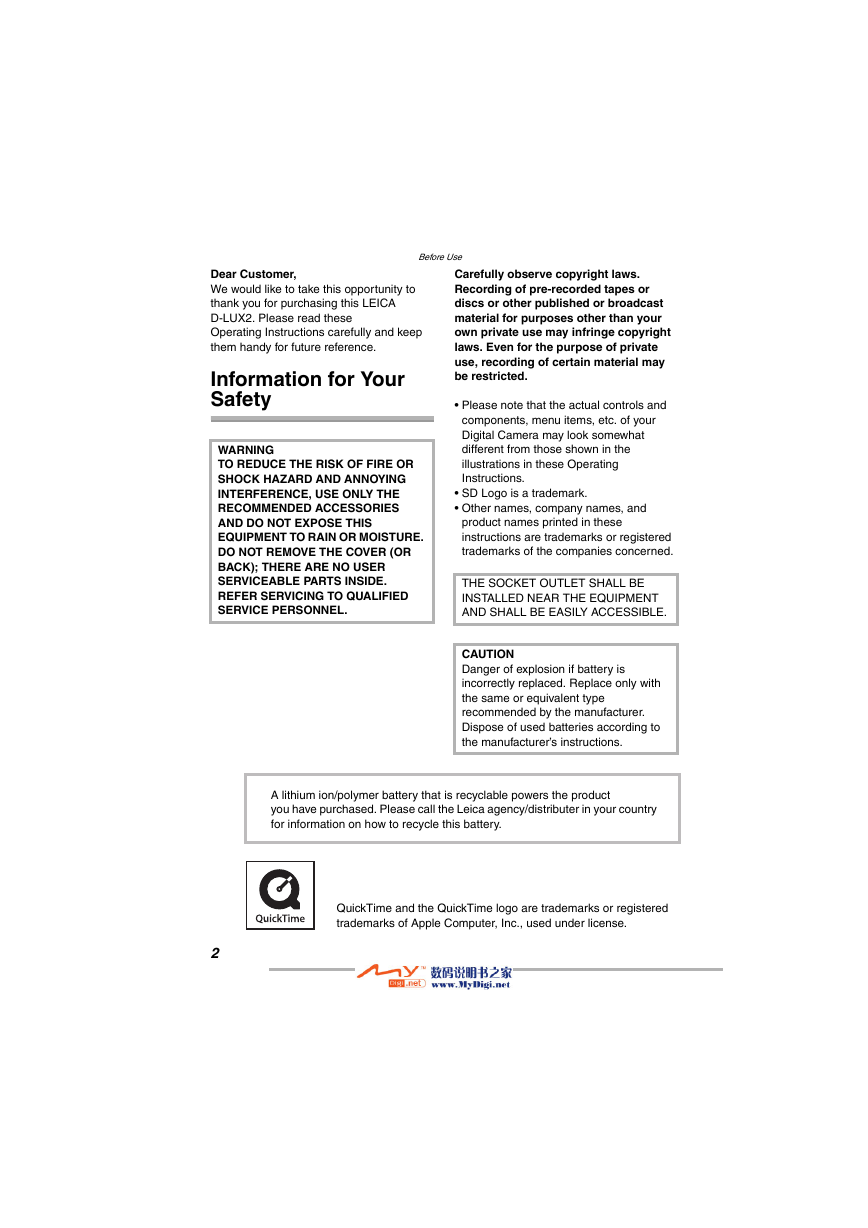
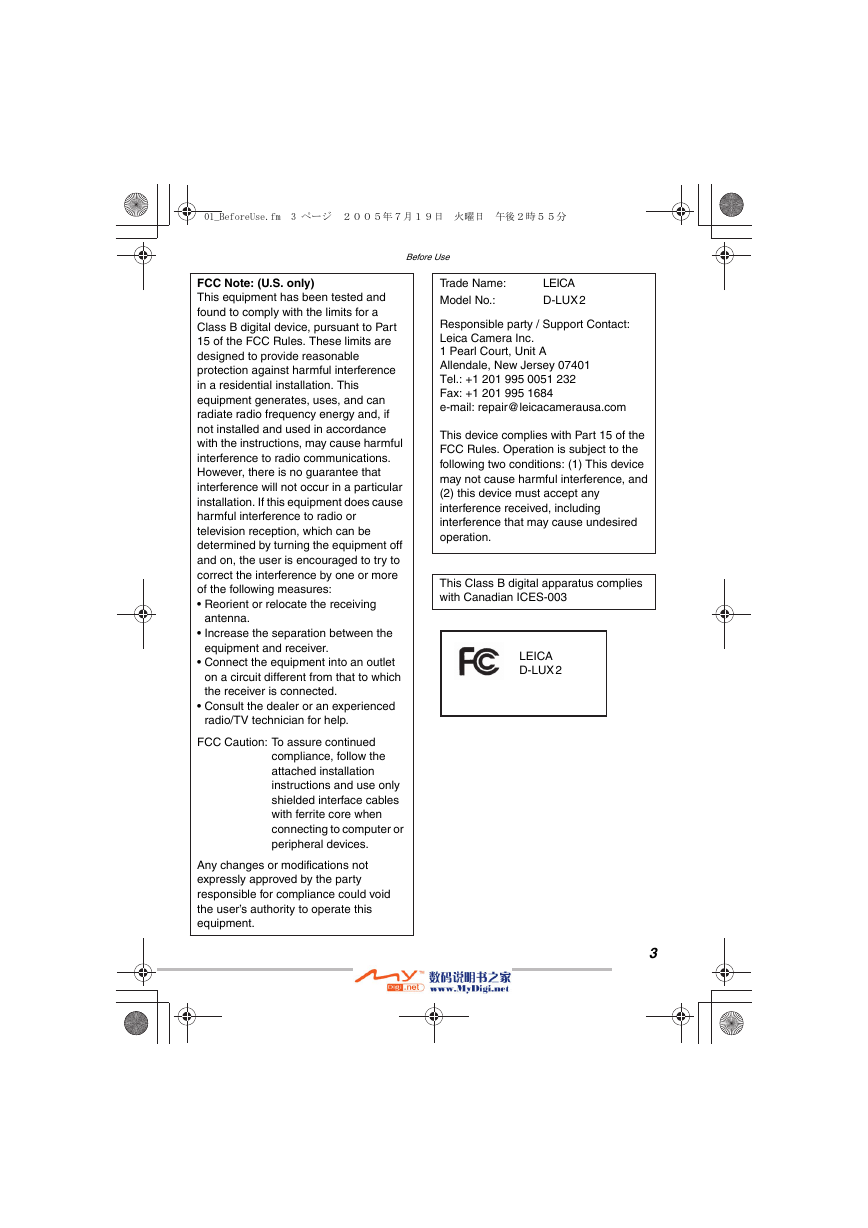
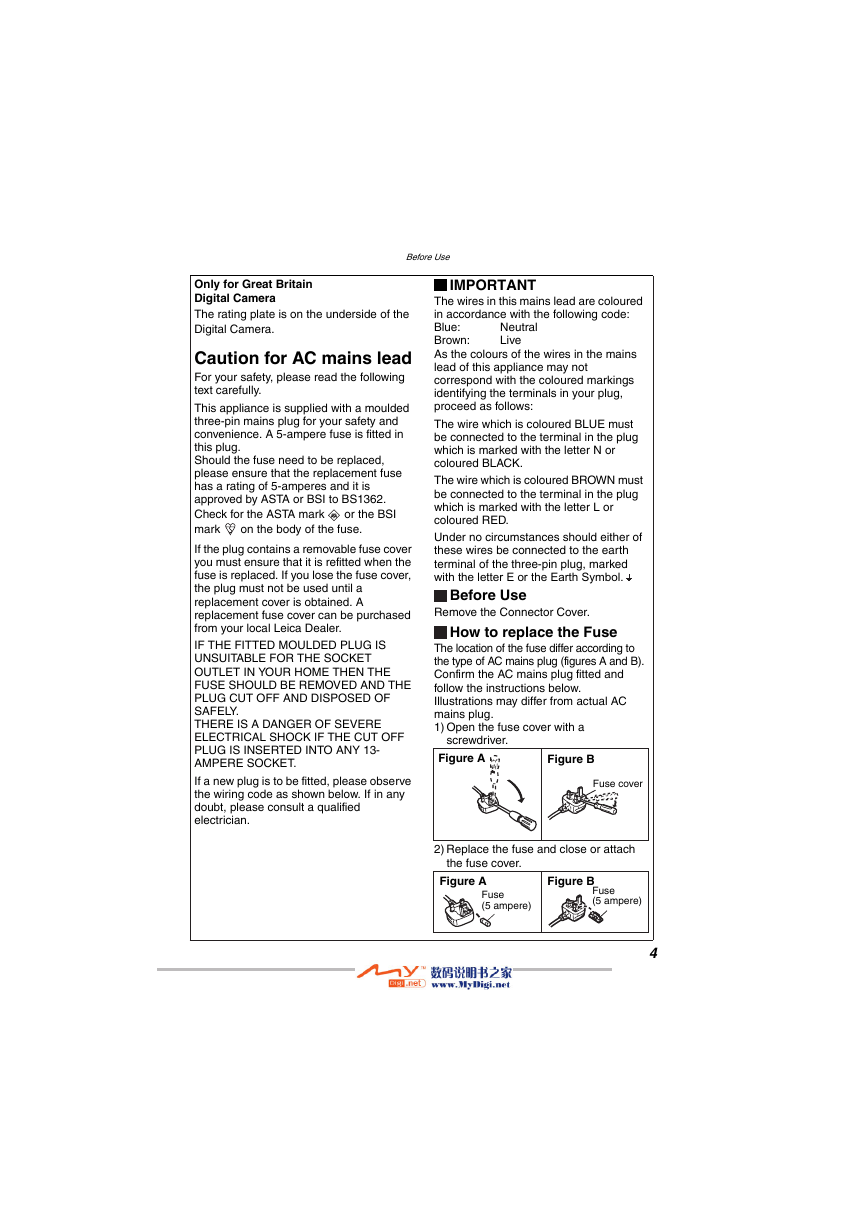

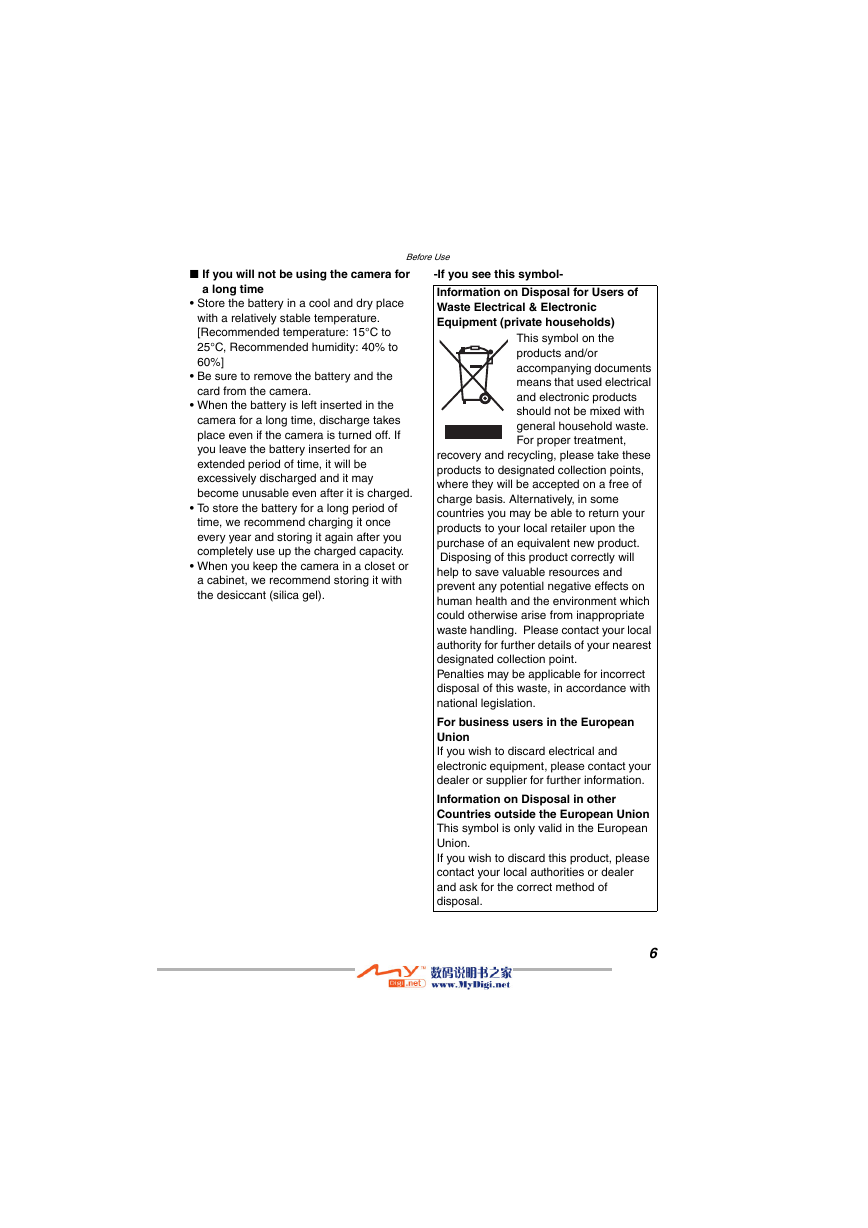
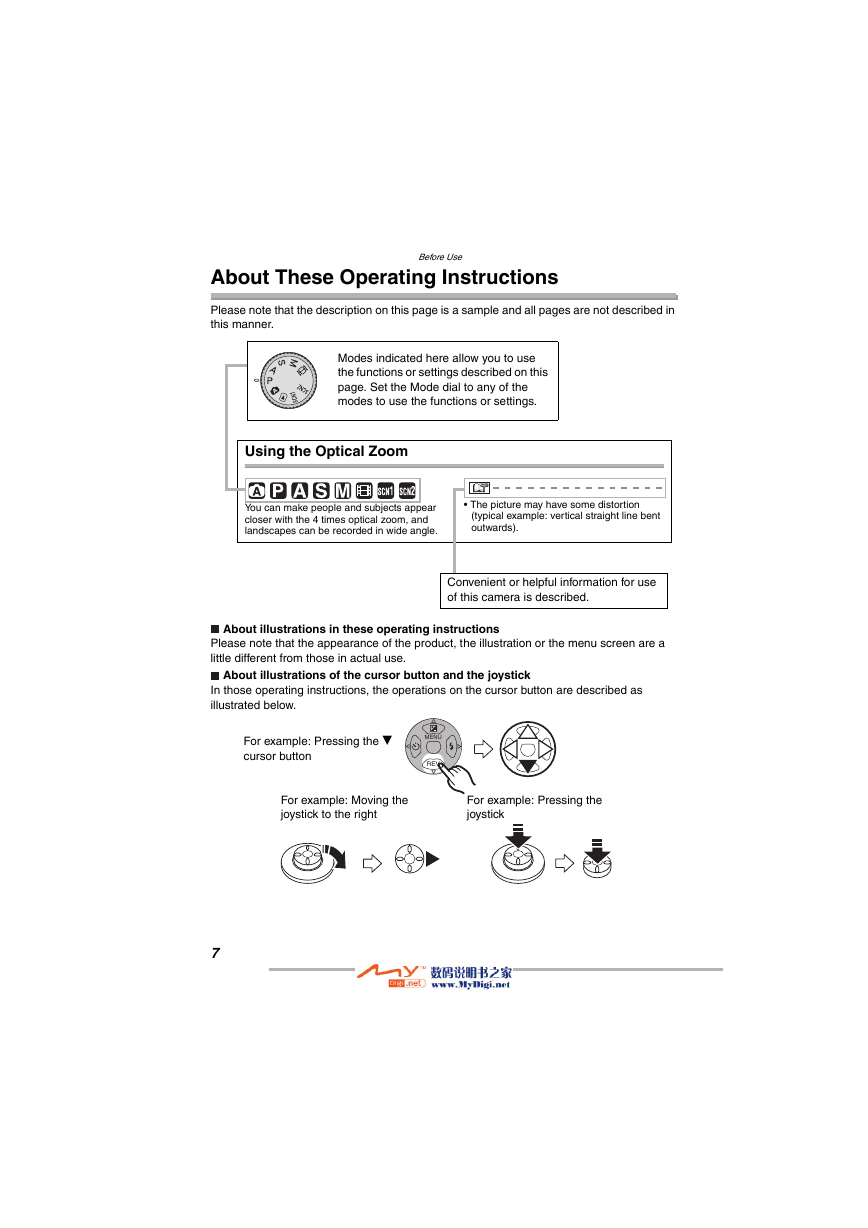
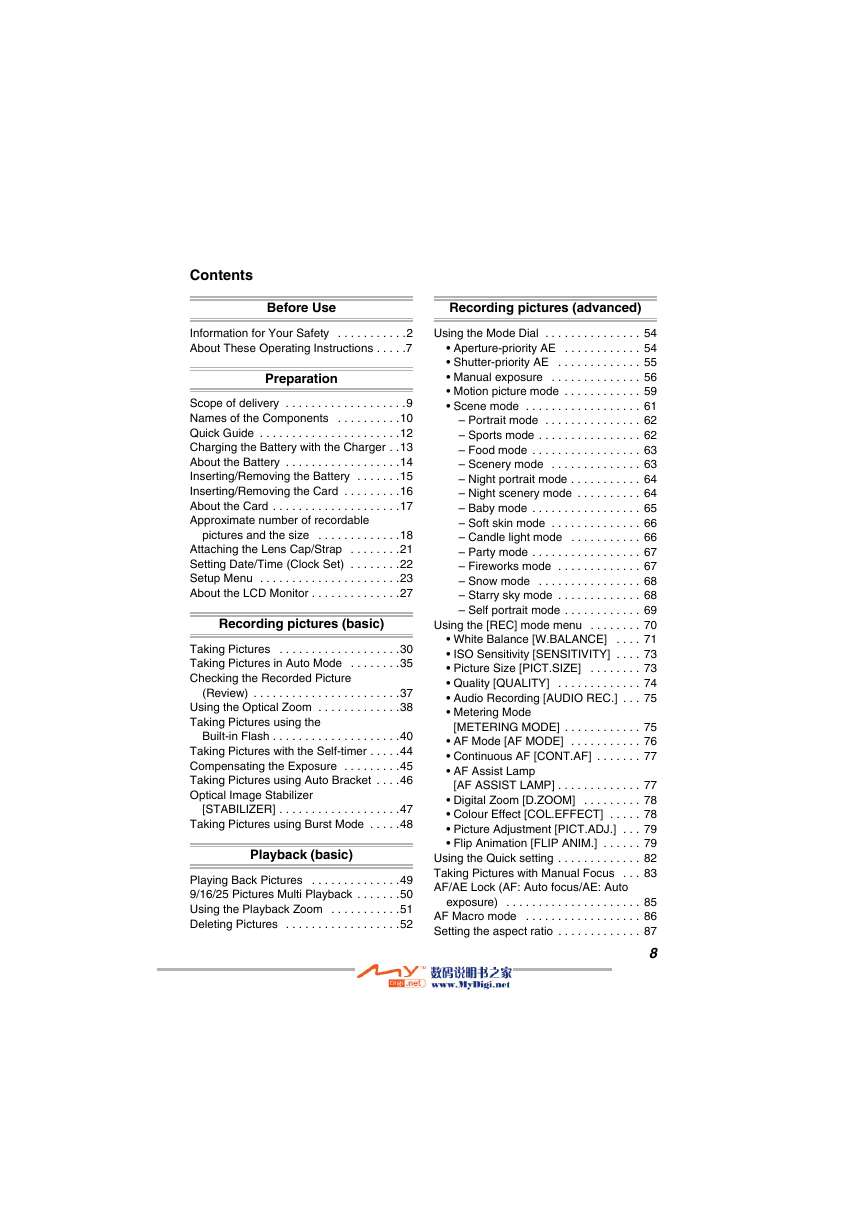








 2023年江西萍乡中考道德与法治真题及答案.doc
2023年江西萍乡中考道德与法治真题及答案.doc 2012年重庆南川中考生物真题及答案.doc
2012年重庆南川中考生物真题及答案.doc 2013年江西师范大学地理学综合及文艺理论基础考研真题.doc
2013年江西师范大学地理学综合及文艺理论基础考研真题.doc 2020年四川甘孜小升初语文真题及答案I卷.doc
2020年四川甘孜小升初语文真题及答案I卷.doc 2020年注册岩土工程师专业基础考试真题及答案.doc
2020年注册岩土工程师专业基础考试真题及答案.doc 2023-2024学年福建省厦门市九年级上学期数学月考试题及答案.doc
2023-2024学年福建省厦门市九年级上学期数学月考试题及答案.doc 2021-2022学年辽宁省沈阳市大东区九年级上学期语文期末试题及答案.doc
2021-2022学年辽宁省沈阳市大东区九年级上学期语文期末试题及答案.doc 2022-2023学年北京东城区初三第一学期物理期末试卷及答案.doc
2022-2023学年北京东城区初三第一学期物理期末试卷及答案.doc 2018上半年江西教师资格初中地理学科知识与教学能力真题及答案.doc
2018上半年江西教师资格初中地理学科知识与教学能力真题及答案.doc 2012年河北国家公务员申论考试真题及答案-省级.doc
2012年河北国家公务员申论考试真题及答案-省级.doc 2020-2021学年江苏省扬州市江都区邵樊片九年级上学期数学第一次质量检测试题及答案.doc
2020-2021学年江苏省扬州市江都区邵樊片九年级上学期数学第一次质量检测试题及答案.doc 2022下半年黑龙江教师资格证中学综合素质真题及答案.doc
2022下半年黑龙江教师资格证中学综合素质真题及答案.doc